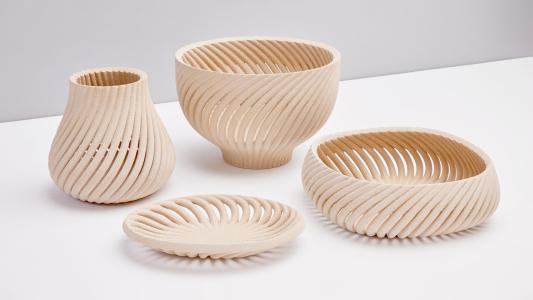Using a mix of three different carbon-based inks, engineers at Duke University have created the first-ever fully recyclable transistor — printed on paper.
The challenge: Electronic waste is a massive problem. 72% of the world’s electronics don’t ever get recycled, and according to the UN’s Global E-waste Monitor, this generated 53.6 million metric tonnes (Mt) of waste worldwide in 2019. And the trends only point to more of it in the years to come. 2019 saw a 21% increase in e-waste over 2014, and experts expect the number to double by 2030.
E-waste contains materials like mercury, lead, lithium, which are dangerous to human health. When thrown into an improperly managed landfill, these toxic materials may contaminate the surrounding area.
- To make matters worse, legislation doesn’t seem to work. According to the same UN report, 71% of the global population lives under some form of national e-waste policy or regulation. And yet: “If you look at the very extreme low percentage of recycled e-waste, it is a sign that although these policies and legislation are in place, it doesn’t do so much,” Mijke Hertoghs, head of the environment & emergency telecommunications division at the International Telecommunication Union, told The Verge.
The opportunity: New methods for recycling electronic materials (“e-cycling”) might drive a new wave of innovation in eco-friendly electronics.
In a new study published in Nature Electronics, Duke researchers demonstrate a new type of printable electronics that can be fully recycled.
These transistors are functional and sturdy enough to last for six months, and because they’re printed with fully recyclable carbon-based inks, all materials can be decomposed to their original building blocks using a series of baths and gentle vibrations from sound waves.
Hit print: The breakthrough in this study lies in the insulator ink that the researchers used: nanocellulose. Nanocellulose is made from wood pulp and already used in a variety of products ranging from packaging to cosmetics — but Aaron Franklin, one of the authors of the study and electrical and computer engineering professor at Duke, explained that this marks the first time it has been suspended in a solution and used as an ink.

“Nanocellulose is biodegradable and has been used in applications like packaging for years,” Franklin said. “And while people have long known about its potential applications as an insulator in electronics, nobody has figured out how to use it in a printable ink before. That’s one of the keys to making these fully recyclable devices functional.”
Use cases: Transistors, which Computerworld once called the “most important invention of the 20th Century,” are fairly complex to create. Researchers hope that by demonstrating how functional and complex electronics can be made fully recyclable, they can inspire a new generation of eco-friendly electronics.
“Silicon-based computer components are probably never going away, and we don’t expect easily recyclable electronics like ours to replace the technology and devices that are already widely used,” Franklin said. “But we hope that by creating new, fully recyclable, easily printed electronics and showing what they can do, that they might become widely used in future applications.”
With these new applications emerging in markets and industries worldwide — particularly as 5G Internet-of-Things (IoT) devices become more commonplace — Franklin hopes advances like this recyclable transistor will encourage growth without adding ever more toxic waste to landfills.
“It is absolutely not targeted at upending the half-trillion-dollar semiconductor industry,” Franklin said. “People want more and more data, and more sensors to capture that data. Be it agricultural or medical or environmental sensors, there’s an increasing appetite for getting electronics all over the place.”
We’d love to hear from you! If you have a comment about this article or if you have a tip for a future Freethink story, please email us at [email protected].






